4Revsピックアップ
2022年10月31日
持続可能な電子デバイスのための「サーキュラー戦略」とは?
#エコシステム#エコデザイン#サーキュラー#世界における最も難しい課題を解決するためのデジタルテクノロジー#資源#電子工学#電子廃棄物

【概要】
今日、50億人以上の消費者が毎日データに接しています。そして2025年には、その数は60億人、つまり世界人口の75%にまで増加すると予想されています。2022年、世界のコネクテッドデバイスの数は9億2900万台であり、この数は増え続けるでしょう。
デジタルトランスフォーメーションは、経済成長に直結しており、また、エレクトロニクスの生産と消費の方法によって、環境の持続可能性に直接的な影響を及ぼします。メキシコだけで、年間1220KTの電子廃棄物が発生し、電子廃棄物のわずか3%が正しく処理されています。
近年、世界的に持続可能な経済戦略として、循環型経済が注目されています。循環型経済モデルの核心は、廃棄物をデザインしないことです。製品は長持ちするように設計され、分解と再利用のサイクルに最適化されることで、取り扱いや変形、再生が容易になるはずです。
このケーススタディでは、電子デバイスの製造における循環型のステップに光を当てます。エコデザインから持続可能な素材の選択、ポストコンシューマー段階を考慮することの重要性まで、このケーススタディは電子機器の循環型未来を調査しています。
持続可能なエレクトロニクス製造に向けたサーキュラーガイド
主なハイライト
【問題点】
デジタルトランスフォーメーションは、経済成長に直結し、有害物質の使用により環境の持続可能性に影響を与えます。メキシコでは年間1220KTの電子廃棄物が発生し、電子廃棄物のうち正しく処分されているのはわずか3%です。
E-waste(電子機器廃棄物)は、非常に難しい廃棄物の一種です。米国では、埋立地に存在する廃棄物のわずか2%ですが、埋立地に存在する有害物質の70%の原因となっています。
【背景】
欧州委員会の循環型経済行動計画では、エレクトロニクスは循環型経済への移行に不可欠なバリューチェーンのひとつと位置づけられています。
世界では、電子機器のうち、適切にリサイクルされているのはわずか20%です。
【解決方法】
エレクトロニクスを循環型に設計することで、増大するエレクトロニクスの需要と地球の限界を両立させることができます。
メキシコでは、ある新興企業が、電子機器製造業界が真似できるような循環型のアプローチで電子機器の設計を始めています。
【インパクト・ステートメント】
2050年には、世界のエレクトロニクス消費量が2倍になると予測されています。
【システムの視点】
循環型社会は、企業が真に持続可能な企業となるために取り組まなければならない多くの要因のひとつに過ぎません。社会的責任や人権といった他の課題は、循環型経済計画を実施する際に軽視されがちですが、持続可能性行動計画の中核をなすものでなければなりません。
【サーキュラー・マニュファクチャリングは、EEEにとってどのような存在になり得るのでしょうか?】
まず、EEEのサーキュラー・マニュファクチャリングがどのようなものかを見るには、そのバリューチェーンやサプライチェーンを理解する必要があります。これは、サーキュラー・デザインプロセスのどのプロセスにおいても不可欠なステップです。
一般に、EEE製造のバリューチェーンやサプライチェーンは
1.資源採取
2.製造
3.パッケージング
4.配布方法
5.使用方法
6.ライフサイクル終了
上記の各ステップには、循環型社会のための1つまたは複数の課題と機会が潜んでいます。例えば、直線的な経済では常に有限の資源を採取しています。EEEの生産は、未使用の原材料を使って行うことができるでしょうか?EEEの生産は経済的な理由から外注されることが多い。BSCI規格に基づく行動規範と責任ある実践の下でサプライヤーが働くことを生産側が保証できないか?
※EEE:Electrical and electronic equipment
【EEEの製造に関する循環モデルを形にする】
■ステップ1
サーキュラー・エコノミーの3大原則を意識する。
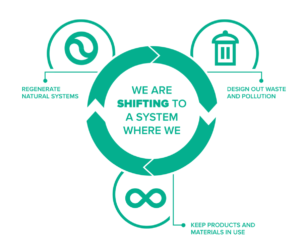
図:サーキュラー・エコノミー3大原則。EMFのラーニングハブより抜粋
循環型経済モデルの中核には、3つの主要な原則があります。
1)廃棄物と汚染をデザインアウトする。
2) 製品や素材の使用状態を維持すること。
3)自然界のシステムを再生する。
循環型経済とは、「無駄なものはない」という考えに基づいています。第一に、製品はそもそも廃棄物や汚染を避けるようにエコ設計されなければなりません。第二に、製品や素材は長持ちするように設計されなければなりません。製品や素材は、分解と再利用のサイクルに最適化され、取り扱いや変形、再生が容易になるようにする必要があります。そして最後に、CEの原則は、資源依存を減らし、生態系の再生を改善しながら、この生産を再生可能なエネルギー源で駆動することに関係しています(例えば補償メカニズムなどによる)。この最後の原則は、温室効果ガス排出の削減のために極めて重要です。
電子機器を設計・製造する場合、この3つの原則が当てはまります。例えば、メキシコの電子機器メーカー「Hune」は、スピーカーやイヤホン、携帯電話の充電器などを製造するスタートアップ企業です。彼らは、循環型経済(Circular Economy)のツールや理論を用いて、電子機器の製造を行うことで誕生しました。彼らの製品は、段ボールに入れられ、天然染料で着色されています(原則N.1:廃棄物をデザインしない)。また、100%リサイクルされたプラスチックで作られており、リサイクルも可能です。その上、長持ちするように作られています。(原則N.2:製品と素材を使い続ける)。最後に、彼らの生産は、類似の製品に比べ、二酸化炭素排出量を80〜96%削減します(原則N.3:自然システムを再生する)。

図:Huneのインフォグラフィックは、製品がどのように作られ、社会・環境にどのような影響を与えるかを示しています。出典:Hune
■ステップ2
循環型経済の “ハシゴ “を意識する
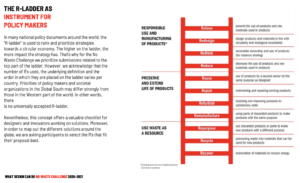
画像:サーキュラー・エコノミーの11Rs。出典:“What design can do”
What Design Can Doが作成したサーキュラーエコノミーのはしごは、どのような行動をとるべきか、その優先順位について方向性を示すものです。このはしごの一番上にあるのが、優先すべき行動です。この優先順位は、”製品の責任ある使用と製造 “に焦点を当てています。製品や製品に使用される原材料の使用を減らし、製品や材料を循環型に即して再設計し、所有と使用を再考し(これはしばしば「共有経済」と呼ばれます)、最後に製品や製品に使用される原材料の使用を減らさなければならないのです。デザイナーにとって、このはしごは、循環型製品を作るためのツールと優先順位を提供するものです。
この梯子では、リサイクルはサーキュラー・エコノミーの優先事項ではありません。したがって、その姿は梯子の一番下にあります。これは、リサイクルをするなということではなく、優先順位を忘れることなく、梯子の上と下で並行して努力することが必要です。
■ステップ3
資源採掘を見直す
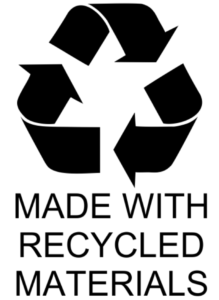
リニア経済は、「資源は無限である」という一つの危険な仮説のもとに動いてきた。しかし、地球のオーバーシュートの日(人類がその年の自然の「予算」を使い果たす日)は、再生できる以上の物質を採取しているという警告である。
循環型生産は、資源採取を見直す必要があります。リサイクル素材を使った生産は、バージン原料の使用を拒否すると同時に、生産に伴う二酸化炭素排出量を削減する優れた方法です。

図:Huneのイヤホンは、リサイクル素材を使用した生産により、カーボンフットプリントを81%削減しています。
■ステップ4
倫理的に生産する。
循環型経済(CE)は、人権や社会的影響を軽視することが多い。CEは素材とその利用を中核とするが、このアプローチは人間を無視する。
EEEの生産は、経済的な理由から外注されることが多く、この外注は持続可能な社会的慣行につながる可能性があります。
サステナビリティ/サーキュラリティを考慮した設計を行う場合、社会的責任を保証することも重要です。これを保証する方法はいろいろありますが、BSCI規格を申請したり、この保証を提供できるアウトソーシングを探したりするのも一つの方法でしょう。
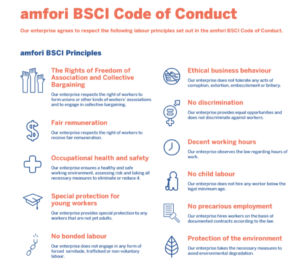
アンフォリ / BSCI行動規範。アンフォリより抜粋
■ステップ5
パッケージのリデザイン
パッケージングの基本は、流通経路の中で製品を保護することです。消費者の手に渡れば、その製品が使用可能であることを保証するものである。
しかし、直線的な包装では、製品の安全性しか考慮されません。
包装に対する循環型アプローチは、製品を保護するだけでなく、惑星の限界や資源の効率的な使用も念頭に置いています。パッケージングを再設計するためのガイドラインをいくつか紹介します。
1)パッケージの見直し
2) ボリュームとサイズの再設計と改善、材料の最小化
3)不要なプラスチックは避ける
4)リサイクル可能かコンポスト可能かの判断
5)材料・包装材の回収に向けた取り組み
6)材料とその管理方法に関する明確な情報を提供すること。例えば、「家庭用堆肥」と「産業用堆肥」は大きく異なるので、その違いを明確にすること。
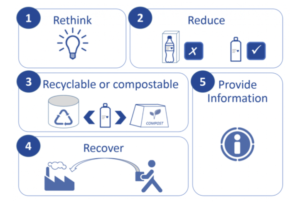
図:循環型経済パッケージングのチェックリストで考慮すべき5つのこと。出典:コーガン・ページ
■ステップ7
耐久性、修理性、リサイクル性に優れたものにする
循環型経済とは、製品や素材を最も価値のある状態で循環させることを目指すものです。つまり、製品として、あるいは使えなくなったものを部品や原材料として、使い続けることです。そうすることで、廃棄物となるものがなくなり、製品や素材が本来持っている価値が保たれるのです。
製品や素材を循環させる方法はいくつかありますが、このとき、技術サイクルと生物サイクルの2つの基本サイクルについて考えてみるとよいでしょう。技術サイクルでは、製品は再使用、修理、再製造、リサイクルされます。生物学的サイクルでは、生分解性の材料は堆肥化や嫌気性消化によって土に還る。

図:サーキュラー・エコノミーのバタフライ図。出典:エレン・マッカーサー財団
■ステップ8
常に製品ライフサイクルの終わりを考える。
循環型設計を行う場合、使用後のことを考えることは非常に重要です。リサイクルプロセスやリバースロジスティクスを促進するための100%理想的なインフラを持つ国はありません。
そして、民間企業は、より高い材料回収率に向けて努力しなければなりません。E-wasteの回収は非常に困難であり、循環型処理をしていない場合は、致命的な事態になる可能性もあります。米国では、埋立地に存在する廃棄物の2%に過ぎませんが、埋立地から発見される有害物質の70%はE-wasteが原因となっています。
【回収のためのポストコンシューマ戦略例】
a.ユーザーが古い製品を企業の回収機構に持ち込むと、新製品を割引する。
b.売るのではなく、レンタルする最近、アップルは携帯電話を販売する代わりにレンタルするようになりました。この戦略は、ユーザーが新しい携帯電話を受け取るために、使用済みの携帯電話を渡さなければならないので、回収を簡素化することができます。
c. 政府による EEE リサイクルインフラの整備を支援する。
d. EEE 回収キャンペーンを毎年実施する。
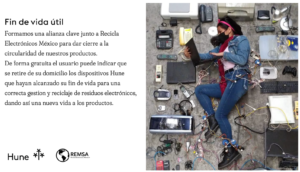
図:Huneの戦略は、製品(E-waste)の無料引き取りを提案し、新規購入の際には割引を提供することです。
【インパクト・ステートメント】
サーキュラーエコノミーがもたらすエレクトロニクスへの可能性
電気・電子機器(EEE)は、私たちの生活になくてはならないものです。ロボット、輸送、医療、建設など、EEEエンジニアのサービスは、現在の社会のほぼすべての分野の仕事に役立っています。
しかし、私たちが電子機器を生産し、消費する方法には、多くの負の外部性が残されています。これらの電子機器は、多くの場合、有毒な化学物質や生態系に致命的な物質を使用して製造されています。電子機器がリサイクルされなかったり、正しく処理されなかったりすると、有毒物質が放出される可能性があります。DoSomething.orgによると、電子機器廃棄物は埋立地の廃棄物の2%に過ぎませんが、有毒廃棄物全体の70%を占めているとのことです。
さらに、「Global E-waste monitor 2020」によると、ほとんどのE-wasteがアジア、アメリカ、ヨーロッパで発生していることがわかります。また、正式なE-wasteの回収・リサイクル率が最も高い大陸はヨーロッパで(42.5%)、次いでアジア(11.7%)とアメリカ大陸(9.4%)となっています。
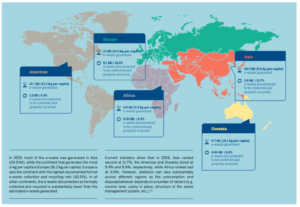
図:世界のE-waste統計。グローバルE-wasteモニター2020より抜粋
“消費と廃棄の行動はいくつかの要因(例:所得水準、実施されている政策、廃棄物管理システムの構造など)に依存するため、統計は異なる地域間で大幅に異なる可能性があります”。世界中で発生するE-wasteは、一般的に4つの方法で収集・管理されています。
1) 正式な回収
2) ゴミ箱で回収されるE-waste
3) 正式なシステム外で回収されるE-waste(民間企業の取り組み)
4) 正式なシステム外で個人によって回収されるE-waste です。
さらに、E-wasteの回収や正式な廃棄システムだけでなく、サーキュラー・エコノミーのツールや理論に従ってEEEを再設計することが急務となっています。これらのツールは、廃棄物を最初から排除するのに役立ちます。メキシコでは、年間1220KTのE-wasteが発生しています。このうち、回収され、リサイクルされるのはわずか3%です。民間部門は、より高い回収率に向けて努力しなければなりません。
循環型戦略を持たないことは非常に有害です。米国では、埋立地に存在する廃棄物のわずか2%を占めるに過ぎませんが、埋立地に見られる有害物質の70%は循環型戦略のせいなのです。
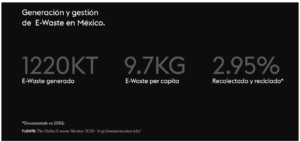
図:2014年、メキシコのE-waste発生量。出典:Hune
【システムの視点】
循環型経済3原則の整合性は、もはや環境への害を少なくすることに焦点を当てるのではなく、いかに積極的に環境を改善できるかに焦点を当てることができることを示しています。経済が循環型原則に従えば、私たちがやればやるほど、より大きな恩恵が得られます。
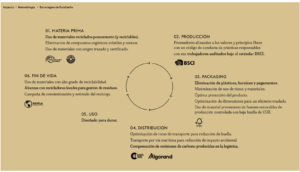
図:Hune社のサプライチェーン。同社ウェブサイトより抜粋。
【リンクとお問い合わせ先】
https://www.vttresearch.com/en/news-and-ideas/five-ways-towards-sustainable-electronics
【担当者リサーチャー】
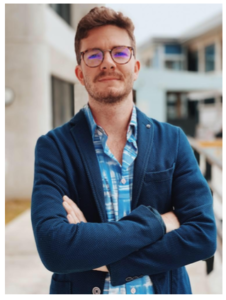
クリストファー・ブローズ
政治学者。現在、アップサイクルの分野を専門としている。ここ数年、循環型経済、ラテラル・シンキング、クリエイティビティについて研究している。

ルーカス・サンチェスM.
ルーカスは、社会変革に関連するプロジェクトのためのアートや、アーティスト/ミュージシャンとして活動しています。政治学、音楽、ホリスティックサイエンスのバックグラウンドを持つ。
***
人類は4つの生存のための本質的な課題(4Revs)またはボトルネックに直面しています。
地球上の生命が繁栄し続けるために、私たちが乗り越えなければならない課題。食料、水、資源、気候変動・エネルギーです(詳細は後述)。この4つの分野は、画期的なイノベーションが必要であると同時に、新しいチャンスの宝庫でもあります。
4Revsは、ユニークな共創型エコシステムです。
この4つの生存のための課題を、2020年から2050年の間に一世代で解決することを目指しています。
※本稿はDeepLで原文を翻訳しました。日本語での表現があいまいな部分は英文表記を正とします。
Oct 31, 2022
A circular guide towards manufacturing sustainable electronics
#eco-system#eco-design#circular#tech-for-good#resource#electronics#e-waste
A circular guide towards manufacturing sustainable electronics
Main Highlights
【Problem】
- Digital transformation is directly linked to economic growth and impacts environmental sustainability due to the use of toxic substances. Annually, 1220 KT of e-waste is generated in Mexico, and just 3% of electronic waste is correctly disposed of.
- E-waste is a very challenging type of waste. In the U.S, it represents only 2% of the waste present in landfills, but it is responsible for 70% of the toxic substances found in landfills.
【Context】
- The European Commission’s Circular Economy Action Plan identifies electronics as one of the critical value chains for the transition toward a Circular Economy.
- Worldwide, only 20% of electronics are recycled properly.
【Solution】
- Designing electronics in a Circular way can balance the increasing demand for electronics with the planetary limits.
- In México, one start-up has begun to design electronics with a circular approach that the electronic manufacturing industry could replicate.
【Impact statement】
- The global consumption of electronics is forecast to double by 2050.
【Systems perspective】
- Circularity is only one of the many factors that a company must tackle to become genuinely sustainable. Other challenges like social responsibility and human rights are often disregarded when implementing a circular economy plan, but they must also be at the core of a sustainability action plan.
【How could circular manufacturing look for EEE?】
First of all, to see what circular manufacturing for EEE looks like, it is necessary to understand its value chain or supply chain – this is an essential step for any process of circular design process.
Generally, the value chain or supply chain of EEE manufacturing is
- Resource extraction
- Production
- Packaging
- Distribution
- Use
- End of life
In each of the steps above lies one or several challenges and opportunities for circularity. For instance, the linear economy has always extracted finite resources: could the production of EEE be made using non-virgin raw materials? Production of EEE is often outsourced for economic reasons: could the production guarantee that suppliers work under a code of conduct and responsible practices under the BSCI standard?
※EEE:Electrical and electronic equipment
【Drawing a circular guide on EEE manufacturing】
■Step 1
Be aware of the three main principles of the Circular Economy

Figure: Circular Economy 3 main principles. Extracted from the Learning Hub of the EMF
At its core, a circular economy model has three main principles:
1) Design out waste and pollution;
2) Keep products and materials in use, and
3) Regenerate natural systems.
A circular economy is based on the idea that there is no such thing as waste. First, products must be eco-designed to avoid waste and pollution in the first place. Second, products and materials should be designed to last; products and materials should be optimized for a cycle of disassembly and reuse that will make it easier to handle and transform or renew them. And finally, the last principle of the CE has to do with powering this production with renewable energy sources while decreasing resource dependency and improving ecosystemic regeneration (through compensation mechanisms, for example). This last principle is crucial for the reduction of Greenhouse Gas Emissions.
When designing and producing electronics, those three principles are applicable. For example, “Hune” is a Mexican electronic start-up that makes speakers, earphones, and cell phone chargers. They were born using Circular Economy ́s tools and theories for its electronic manufacturing. Their products are packaged in cardboard and tinted with natural dye (Principle N.1: design out waste). Their products are also made from 100% recycled plastic, and they are also recyclable. Besides, they are built to last. (Principle N.2: Keep products and materials in use). Finally, their production reduces the carbon footprint to 80-96% less CO2 than similar products (Principle N.3: Regenerate natural systems).

Figure: Hune ́s infographic shows how their products are made and their social-environmental impact. Source: Hune.
■Step 2
Be aware of the circular economy “ladder”

Image: 11 Rs of the Circular Economy. Source: “What design can do”
The Circular Economy ladder was made by What Design Can Do to give some directions towards which actions to take and the priority amongst them. At the top of the ladder, there are priority actions. These priorities are focused on “Responsible use and manufacturing of products.” We must reduce the use of products and raw materials used in products, redesign products and materials in line with circularity, rethink ownership and use (this is often called “shared economy”), and finally reduce the use of products and raw materials used in products. For designers, this ladder provides tools and priorities to make circular products.
In this ladder, recycling is not a priority for the Circular Economy. Therefore its appearance is at the bottom of the ladder. This doesn’t mean we should not recycle; instead, parallel efforts must be taken on the top of the ladders, and at the bottom, without forgetting the priorities.
■Step 3
Rethink resource extraction

The linear economy has worked under one dangerous hypothesis: resources are infinite. Yet, the Earth’s overshoot day (when humanity has exhausted nature’s “budget” for the year) is a warning that we are extracting more materials than we can regenerate.
Circular production must rethink resource extraction. Producing with recycled materials is an excellent way to refuse the use of virgin raw materials while simultaneously reducing the carbon footprint of production.

Figure: Hune ́s earphones reduce 81% of the carbon footprint by producing using recycled materials.
■Step 4
Produce ethically.
The Circular Economy (CE) often disregards human rights and social impact. CE has its core on materials and using materials, but this approach disregard humans.
Production of EEE is often outsourced for economic reasons, and this outsourcing can lead to sustainable social practices.
Guaranteeing social responsibility is also essential when designing for sustainability/circularity. There are many ways to ensure this, but one could be to apply for the BSCI standard or look for outsourcing that can provide this guarantee.

Amfori / BSCI code of conduct. Extracted from Amfori
■Step 5
Redesign packaging
Fundamentally, packaging protects products during the distribution chains. It is a warrant that once in the hands of consumers, the products are usable.
Yet, linear packaging only takes into consideration the product ́s safety.
A circular approach towards packaging not only has in mind to protect the product but also the planetary limits and the efficient use of resources. Some guidelines to redesign packaging are:
1) Rethink packaging
2) Redesign and improve volumes and sizes and minimize materials
3) Avoid unnecessary plastics
4) Deciding if it is going to be recyclable or compostable
5) Making efforts toward material and packaging recovery
6) Providing clear information on the materials and the way must manage them. For example, there is a big difference between “Home Compost” and “Industrial Compost”; that difference should be clear.

Figure: 5 things to consider on a circular economy packaging checklist. Source: Kogan Page
■Step 7
Make it durable, reparable, and recyclable
The circular economy aims to circulate products and materials at their highest value. This means keeping materials in use, either as a product or, when they can no longer be used, as components or raw materials. This way, nothing becomes waste, and the intrinsic value of products and materials is retained.
There are several ways to keep products and materials in circulation, and at this point, it is helpful to think about two fundamental cycles – the technical cycle and the biological cycle. In the technical cycle, products are reused, repaired, remanufactured, and recycled. In the biological cycle, biodegradable materials are returned to the earth through composting and anaerobic digestion.

Figure: Circular economy butterfly diagram. Source: Ellen Macarthur Foundation
■Step 8
Always consider the end of life.
When designing for circularity, thinking about what happens after use is crucial. No country has a 100% ideal infrastructure to facilitate recycling processes or reverse logistics.
The private sector must then work towards higher rates of material recovery. Collecting E-waste is very challenging, and not having a circular treatment for them could be potentially lethal. In the U.S, it represents only 2% of the waste present in landfills, but it is responsible for 70% of the toxic substances found in them.
Examples of post-consumer strategies for collection
- Give a discount for new products if users take their old products to the companies collection structure
- Renting instead of selling. Recently, Apple has begun renting their phones instead of selling them. This strategy simplifies the collection, as users must give their used phones to receive a new one.
- Helping the government provide EEE recycling infrastructure. d. Make annual campaigns of EEE collection

Figure: Hune ́s strategy is to propose a free pick-up for their products (E-waste) and offers a discount for new purchases.
【Impact Statement】
Circular Economy ́s potential for electronics
Electrical and electronic equipment (EEE) is essential to our lives. Products and services provided by EEE have benefited almost all fields of work in our current society: the services of EEE engineers are required in the field of robotics, transport, healthcare, construction, and many more.
However, how we produce and consume EEE leaves many negative externalities. These electronics are often built using toxic chemical materials and substances lethal to ecosystems. If EEE is not recycled or treated correctly, it can release toxic substances. According to DoSomething.org, electronic waste only accounts for 2 percent of the waste in our landfills, but it is responsible for 70 percent of the total toxic waste.
Moreover, the Global E-waste monitor 2020 shows that most e-waste was generated in Asia, the Americas, and Europe. Europe is also the continent with the highest documented formal e-waste collection and recycling rate (42.5%), followed by Asia (only 11.7%) and the Americas (only 9.4%).

Figure: Global e-waste statistics. Extracted from the Global E-waste monitor 2020
“Statistics can vary substantially across different regions as the consumption and disposal behavior depends on several factors (e.g., income level, policy in place, the structure of the waste management system, etc.)”. The e-waste generated worldwide is generally collected and managed in four ways:
1) Formal collection;
2) E-waste collected in waste bins;
3) E-waste collected outside formal systems (private companies initiatives) and
4) E-waste collected by individuals outside formal systems.
Moreover, beyond e-waste collection and formal disposal systems, it is urgent to redesign EEE following Circular Economy ́s tools and theories. These could help design out waste from the beginning. Only in Mexico 1220 KT of E-waste is generated annually. Of these, only 3% get collected and recycled. The private sector must then work towards higher rates of material recovery.
Not having circular strategies is very harmful: in the U.S, it represents only 2% of the waste present in landfills, but it is responsible for 70% of the toxic substances found in them.

Figure: E-waste generation in México in 2014. Source: Hune
【Systems Perspective】
The alignment of the 3 Circular Economy Principles shows that we can no longer focus on doing less harm to the environment but on how we can actively improve it. If the economy follows circular principles, the more we do, the greater the benefits

Figure: Hune ́s supply chain. Extracted from their website.
【Links and Contact Information】
https://www.vttresearch.com/en/news-and-ideas/five-ways-towards-sustainable-electronics
【Researcher】

CHRISTOPHER BROSSE
Political scientist. Currently specialized in the field of Upcycling. During the last years, he has been exploring Circular Economy, Lateral Thinking, and Creativity.

LUCAS SÁNCHEZ M.
Lucas works in arts for social change-related projects and as an artist/musician. His background is in Political Science, Music, and Holistic Science.
***
Humanity is facing four essential survival challenges (4Revs) or bottlenecks
which we must overcome to enable the continued flourishing of life on Earth: Food, water, resources, and climate change/energy (details below). These four areas will require revolutionary innovation and, at the same time, provide a treasure trove of new opportunities.
4Revs is a unique, co-creative ecosystem
that aims to help humanity solve these four survival challenges in one generation – between 2020-2050.
最新のピックアップ
-
2024年3月8日
Mar 8, 2024
lithium battery; energy transition; recycling; closed loop

-
2024年3月6日
Mar 6, 2024
Tomato Jos: Investment & Impact into Nigeria’s Tomato Industry

-
2024年3月4日
Mar 4, 2024
ネイチャー・ポジティブに資する 投資は、世界全体のわずか 3%に過ぎない
Only 3 per cent of global investments are nature- positive

-
2024年2月3日
Feb 3, 2024
Towards sustainable regenerative food systems

-
2024年1月4日
Jan 4, 2024
Climate adaptation – 150 options for water in agriculture

